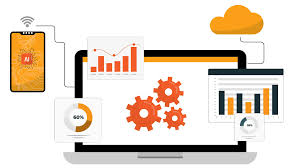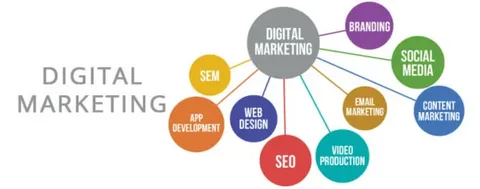The world of software testing has evolved quickly in recent years. As applications grow in size and complexity, teams are under pressure to deliver faster without sacrificing quality. Test automation has helped bridge this gap, but traditional automation often requires advanced technical skills, significant setup, and constant maintenance.
That is where Artificial Intelligence (AI) steps in. AI is transforming how testing is done, making automation easier, smarter, and accessible to everyone, even those without programming backgrounds. Let’s explore how AI is changing the game and how anyone can now become part of the automation process.
The Challenge: Why Traditional Test Automation Can Be Hard
Traditional test automation tools have long been the backbone of QA automation. However, they come with several hurdles that often discourage new teams or non-technical testers:
- Coding Requirements: Most traditional tools require knowledge of programming languages such as Java, Python, or C#.
- Fragile Scripts: Even minor UI or element changes in the app can cause automated scripts to fail, requiring frequent updates.
- High Maintenance: Keeping tests up to date consumes time and resources, which slows down delivery.
As a result, many teams rely on manual testing or partial automation, missing out on the full benefits automation can offer.
Enter AI: A Game Changer for Test Automation
AI-powered test automation removes many of the traditional barriers that have kept teams from fully embracing automation. Instead of relying on hardcoded scripts or strict programming rules, AI systems can analyze data, recognize patterns, and make decisions just like a human tester would. This allows test automation to become more intuitive, adaptable, and efficient than ever before.
What truly sets AI apart is its ability to learn from each test execution. It can identify recurring problems, adapt to UI changes, and suggest improvements automatically. This level of intelligence eliminates much of the manual effort involved in maintaining and expanding automated tests, giving QA teams more time to focus on quality and user experience instead of technical upkeep.
How AI Simplifies Test Automation
Before diving into the specific techniques, it is important to understand that AI simplifies automation not by adding complexity, but by removing it. Instead of forcing testers to learn coding or debugging, AI automates the hard parts and interprets human intent in simple terms.
AI has made automation more approachable for every team member. It streamlines the process, eliminates repetitive tasks, and ensures consistent test quality across all platforms. Now, let’s look at how AI helps make test automation easier for everyone.
- Natural Language Test Creation
One of the biggest breakthroughs AI brings is the ability to create test cases in plain English. Testers can simply describe what they want to test, such as “Click the login button and verify that the dashboard loads.” The AI interprets it into executable test steps.
This approach eliminates the need for coding and empowers anyone, from product managers to manual testers, to contribute to automation.
- Self-Healing Tests
In traditional automation, even a small UI change like renaming a button could cause scripts to fail. AI changes that with self-healing capabilities. When an element changes, AI analyzes attributes and context to locate the updated element automatically.
This dramatically reduces maintenance time, allowing teams to focus on improving quality instead of fixing broken scripts.
- Smart Test Generation
AI can analyze user behavior, application logs, and historical defects to suggest or generate test cases automatically. By identifying high-risk areas or frequently used workflows, AI ensures comprehensive test coverage without requiring hours of manual test design.
- Intelligent Test Execution
AI doesn’t just create and maintain tests. It also optimizes their execution. It can prioritize which test cases to run first, detect flaky tests, and even predict potential failures based on previous runs. The result is faster, more reliable testing cycles.
- Visual and Cognitive Testing
AI introduces a new level of precision through visual validation. Instead of relying solely on code-based verifications, AI can analyze screenshots to check layout accuracy, missing images, or color mismatches. This ensures not just functional correctness but also a better user experience.
AI makes test automation simpler, smarter, and more sustainable. With the right tools, even beginners can automate complex workflows with confidence and accuracy.
Benefits of AI-Driven Test Automation
Before exploring the benefits, it is important to note that AI does more than make automation convenient. It transforms the testing process from a technical task into a team-driven activity that emphasizes collaboration, efficiency, and precision.
Here’s how AI-driven testing elevates modern QA practices.
Accessibility
AI has removed the technical barriers that once limited who could automate tests. Anyone on the team, regardless of coding experience, can now write test cases in plain English. This accessibility allows business analysts, product managers, and manual testers to actively participate in automation, creating a more unified quality culture within teams.
Speed
AI significantly reduces the time required to design, run, and maintain test suites. It automatically identifies changes in the application, updates test cases, and executes them quickly. Faster testing means shorter release cycles, faster delivery, and fewer delays caused by human error.
Accuracy
AI minimizes human error by interpreting natural language accurately and detecting inconsistencies that manual testers might overlook. It uses data and pattern recognition to ensure tests are both thorough and precise, which improves the overall reliability of testing outcomes.
Maintenance Efficiency
Traditional automation often breaks when user interfaces change. AI-powered systems adapt automatically. This ability to self-heal ensures that testing continues without disruption and eliminates hours of manual maintenance. Teams can focus their attention on innovation rather than upkeep.
Collaboration
AI fosters better collaboration across departments. Since tests are written in plain language, everyone understands what is being tested and why. This clarity improves communication between QA, developers, and business stakeholders. It also promotes shared ownership of quality.
AI-driven automation, especially with tools like testRigor as an AI software testing tool, bridges the gap between simplicity and sophistication. It combines human understanding with machine intelligence, making it possible to scale automation without overwhelming teams.
In short, AI makes testing faster, more reliable, and far more inclusive than ever before.
How Beginners Can Get Started
You don’t need to be an expert to begin using AI-based testing tools. Here’s how to start:
- Choose the Right AI Tool
Start by selecting a reliable AI-powered test automation platform. A tool like testRigor offers a no-code approach, allowing you to create tests using natural language. This is perfect for beginners who want to experience automation without worrying about frameworks or code setup.
- Begin with Simple Workflows
Start small by automating basic features such as login, search, or form submissions. These early wins help build confidence and demonstrate how AI interprets and executes commands accurately. As you grow comfortable, expand to more complex workflows.
- Leverage AI Suggestions
Many AI tools can recommend test cases based on usage data and previous results. Review these suggestions to ensure coverage of critical paths. Let AI guide your test creation, while you focus on verifying user experience and logic.
- Review and Improve
AI works efficiently, but human insight still plays an important role. Regularly review test outcomes, validate findings, and refine your test cases. This ongoing collaboration between AI and human testers delivers the strongest results.
- Integrate with Development Pipelines
Once your tests are stable, connect them to your CI/CD pipelines. This ensures continuous testing and real-time feedback for developers. Continuous validation helps detect issues early and accelerates release cycles.
AI makes automation achievable for everyone. The key is to start small, learn continuously, and use AI’s strengths to build reliable, repeatable tests that evolve with your product.
The Future of AI in Testing
AI in software testing is moving toward a future where testing becomes fully autonomous and predictive. Instead of waiting for bugs to appear, AI will analyze patterns in code and past results to predict where issues are likely to occur. It will also create and maintain test cases automatically, freeing teams from repetitive setup work. As AI becomes more integrated into CI/CD pipelines, testing will happen continuously, ensuring every code change is validated in real time.
The ultimate goal is for AI to serve as an intelligent assistant that collaborates with human testers. It will not replace people but enhance their decision-making, helping them focus on strategy and user experience rather than repetitive checks. With constant learning and refinement, AI promises a future where testing is faster, more accurate, and fully aligned with the pace of modern development.
Conclusion
AI is simplifying what once made test automation difficult and exclusive. It empowers anyone, regardless of technical expertise, to participate in testing with confidence. By removing the need for complex scripting and reducing maintenance, AI allows teams to focus more on quality and user experience.
As AI continues to advance, it will make testing faster, more reliable, and easier to manage. The future of automation belongs to teams that embrace intelligent tools, work collaboratively, and use technology to improve both speed and accuracy in every release.








